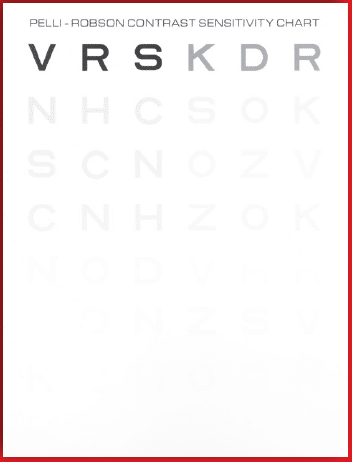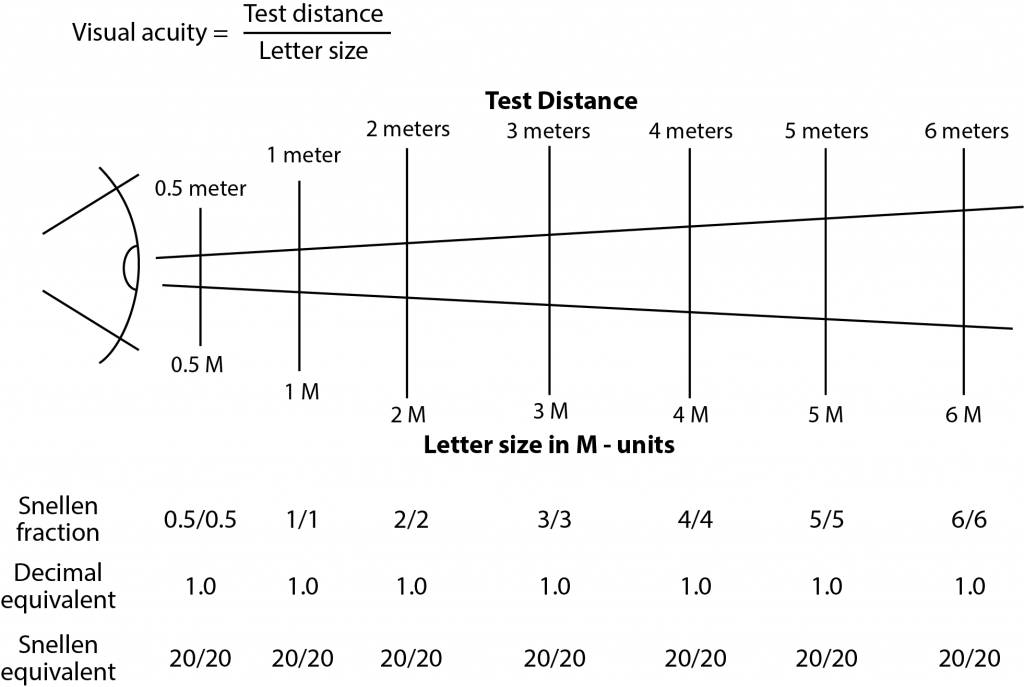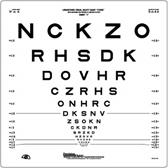
Measuring Snellen Visual Acuity
Measuring Snellen Visual Acuity
Snellen designed his optotypes on a 5×5 grid, on which the line thickness is one unit and the letter width and height are five units. This system is followed for most letter and number charts. For children’s tests (such as Allen pictures and other test symbols), it is often abandoned and much thinner lines are used. Precision Vision offers stylized pictures, called Patti Pics, for which Snellen’s 5×5 principle is followed. They result in less change in the measured acuity when children graduate from picture charts to letter charts. Alternative symbols that can be used for illiterate adults or in countries that are not familiar with the Roman alphabet are the tumbling E test and the Landolt C or broken ring.
Letter charts are not only used to measure visual acuity, they are also used as targets for subjective refraction. This is the main reason distance acuity is measured more often than near acuity. At a long distance, accommodation is relaxed, so that the refraction can be more accurate. At a longer test distance, the effect of small changes in the subject’s position is less important and can be ignored.
As today’s exam lanes often are smaller than 20 feet (6 meters), charts are often designed for shorter distances. This is no problem for visual acuity measurement, as long as the actual test distance is accurately accounted for. For use in refraction, shorter distances are less desirable. At 4 m (the recommended distance for ETDRS charts) the accommodative demand is 0.25 Diopters and cannot be ignored. In smaller rooms, the use of mirrors is recommended to increase the test distance.
Letter size
Snellen used a rather verbose definition to indicate the letter size: “the distance in meters (feet) at which the letter subtends 5 min of arc.” Louise Sloan simplified this by defining the M-unit as the size that subtends 5 min of arc at 1 meter. Thus, the verbose statement “this letter subtends 5 min of arc at ‘x’ meter” can be simplified to “this letter is ‘x’ M-units”. Here the number denoting the M unit size is the viewing distance in meters for 20/20 acuity.
The diagram demonstrates that different combinations of letter size and test distance can result in the same visual acuity value. Snellen’s original intention was that the numerator should indicate the actual test distance. Thus, 4/4 would indicate standard acuity measured at 4 meters, 20/20 would indicate the same acuity value measured at 20 feet. Under this system, tests in lanes of different length would yield different notations. This is not practical. So, today a system of “Snellen equivalents” is used. In the U.S. all Snellen values are converted to a fraction with 20 as the numerator, regardless of the actual test distance, be it 20 ft, 18 ft, 10 ft or even reading distance. In continental Europe, use of the decimal equivalent is common; in Britain and related countries (such as India, Australia) 6/… is common, even if the test distance is not 6 meters.
Continue to learn more about Snellen Eye Test Charts.
Related Terms: Snellen chart, Snellen eye chart, Snellen, Snellen eye test, Snellen visual acuity, Snellen acuity, Snellen vision chart, Snellen acuity, Snellen test






